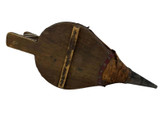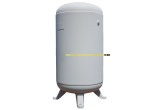The Origins and Evolution of Compressed Air Technology
Compressed air, often referred to as the "fourth utility" alongside water, electricity, and natural gas, has a long and fascinating history. Its journey from simple, ancient tools to sophisticated modern systems illustrates its importance and versatility.
Ancient Beginnings and Early Concepts
The concept of compressed air dates back to ancient civilizations. Around 3000 B.C., the Sumerians used basic bellows, which were hand or foot operated air pumps, to increase the intensity of their fires. These bellows, made from animal skins and wooden handles, also allowed blacksmiths to achieve higher temperatures in smelting and metalworking. The use of compressed air continued to evolve in ancient cultures, including the Greeks and Romans. The famous engineer Hero of Alexandria, in the 1st century A.D., developed the earliest recorded air-powered device, which was a door-opening mechanism for temple ceremonies that used air pressure changes due to heat.
Scientific Foundations in the Renaissance
The scientific examination of air and its properties began in earnest during the Renaissance. In the 17th century, scientists such as Otto von Guericke invented the air pump, which allowed for the creation of a vacuum and demonstrated the weight and pressure of air. This period also saw the formulation of Boyle's Law by Robert Boyle, who described the inverse relationship between the volume and pressure of a gas at constant temperature.
Industrial Revolution and Mechanical Innovations
The Industrial Revolution in the 18th and 19th centuries was a critical period for the advancement of compressed air technology. In 1829, George Medhurst of England wrote about the first concept for an air motor. In the mid-19th century, the Parisian engineer Victor Popp constructed a large-scale compressed air plant that powered clocks, presses, and other machinery throughout Paris. During this time, compressed air began to be used in the mining industry for drilling and moving rock, powered by newly developed compressors. This application marked one of the first major industrial uses of compressed air and paved the way for its adoption in other industries.
20th Century to Modern Times
The 20th century witnessed significant advancements in compressed air technology, driven by improvements in compressor design and the expansion of industrial applications. Compressed Air Magazine began publishing monthly magazines about the latest and greatest in compressed air technology in the early 1900's. Compressed air became critical in manufacturing processes, particularly in powering pneumatic tools, which were lighter and safer than electrically powered equivalents. In the transportation sector, compressed air was essential for the operation of pneumatic brakes in trucks and buses, as well as for starting diesel engines in large vehicles and ships. Additionally, compressed air has played a crucial role in the environmental engineering field, especially in wastewater treatment plants for the aeration of water.
Current Uses and Innovations
Today, compressed air is ubiquitous across various sectors. In manufacturing, it drives machinery and tools in automotive assembly lines, electronics fabrication, and food processing plants. In construction, pneumatic tools such as jackhammers, drills, and sanders rely on compressed air for their operation. The field of medicine also utilizes compressed air, particularly in ventilators and other respiratory devices. Moreover, compressed air is essential in modern energy storage systems, where it is used to store excess energy generated during low-demand periods, which can be released to generate electricity during peak demand.
Future Prospects
As technology advances, so too does the potential for compressed air to play a pivotal role in innovative applications. There is ongoing research into improving the efficiency of air compressors to reduce energy consumption, which is crucial given the high energy costs associated with compressed air systems. Furthermore, as industries seek sustainable and environmentally friendly solutions, compressed air will continue to be a critical component in achieving these goals.
From its ancient roots to its modern applications, compressed air has proven to be a versatile and essential technology. Its development over the centuries has mirrored and contributed to human progress in science, industry, and everyday life. As we look to the future, the continued evolution of compressed air technology will undoubtedly unlock new possibilities and efficiencies across a broad spectrum of industries. Stay tuned for more insights about Artificial Intelligence with air compressors and the future of AI and compressed air.
Recent Posts
-
The Resurgence of Natural Gas Deliquescent Dryers and Desiccants in 2025
How emission-free deliquescent desiccant technology is paving the way for greener operations and low …Jan 06, 2025 -
The Origins and Evolution of Compressed Air Technology
Compressed air, often referred to as the "fourth utility" alongside water, electricity, and natural …Jun 28, 2024 -
Popular Sizes of Vertical Air Receiver Tanks
Sizing and deciding on the best air receiver tank for your compressed air application can be conf …May 05, 2024




